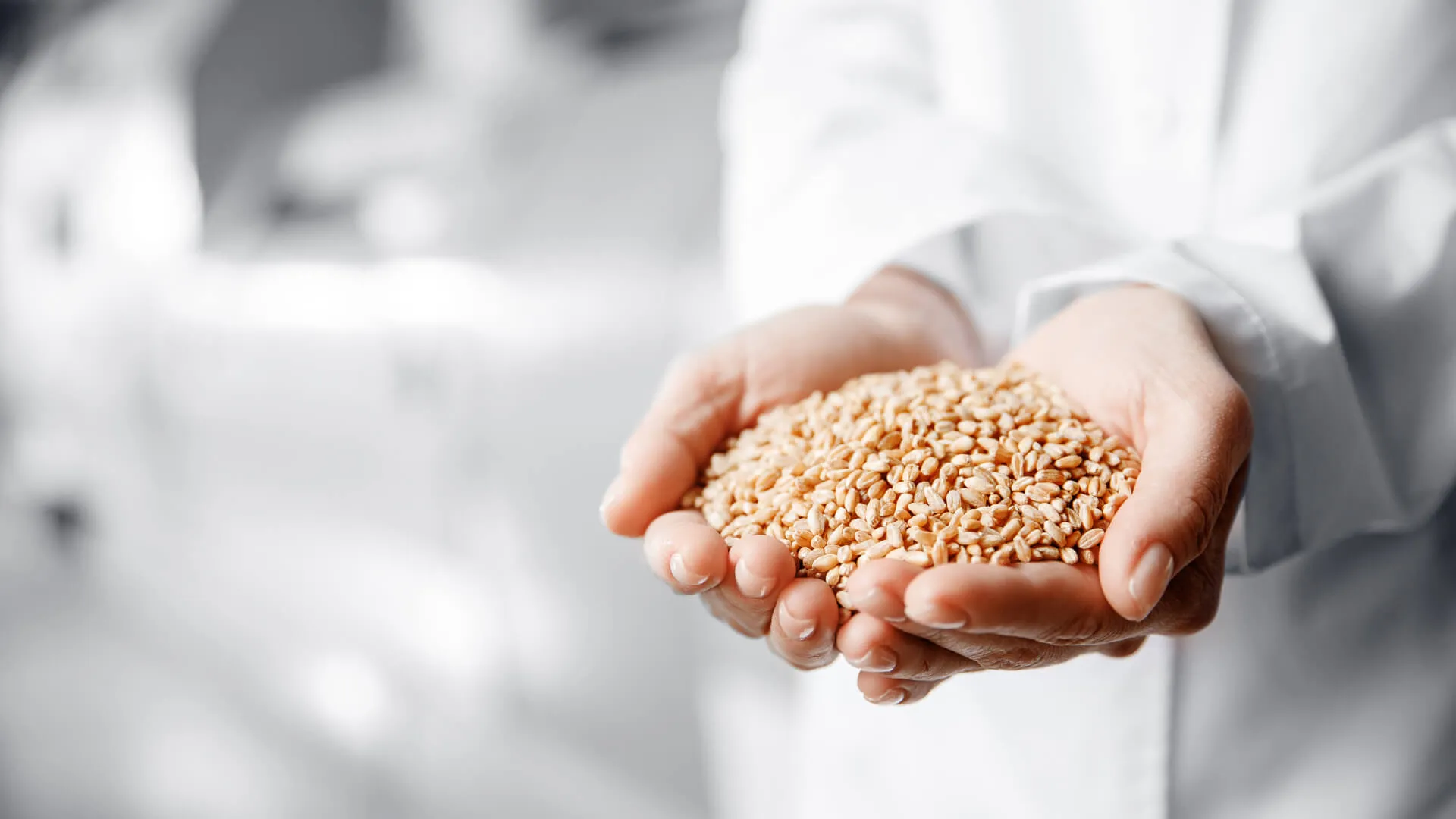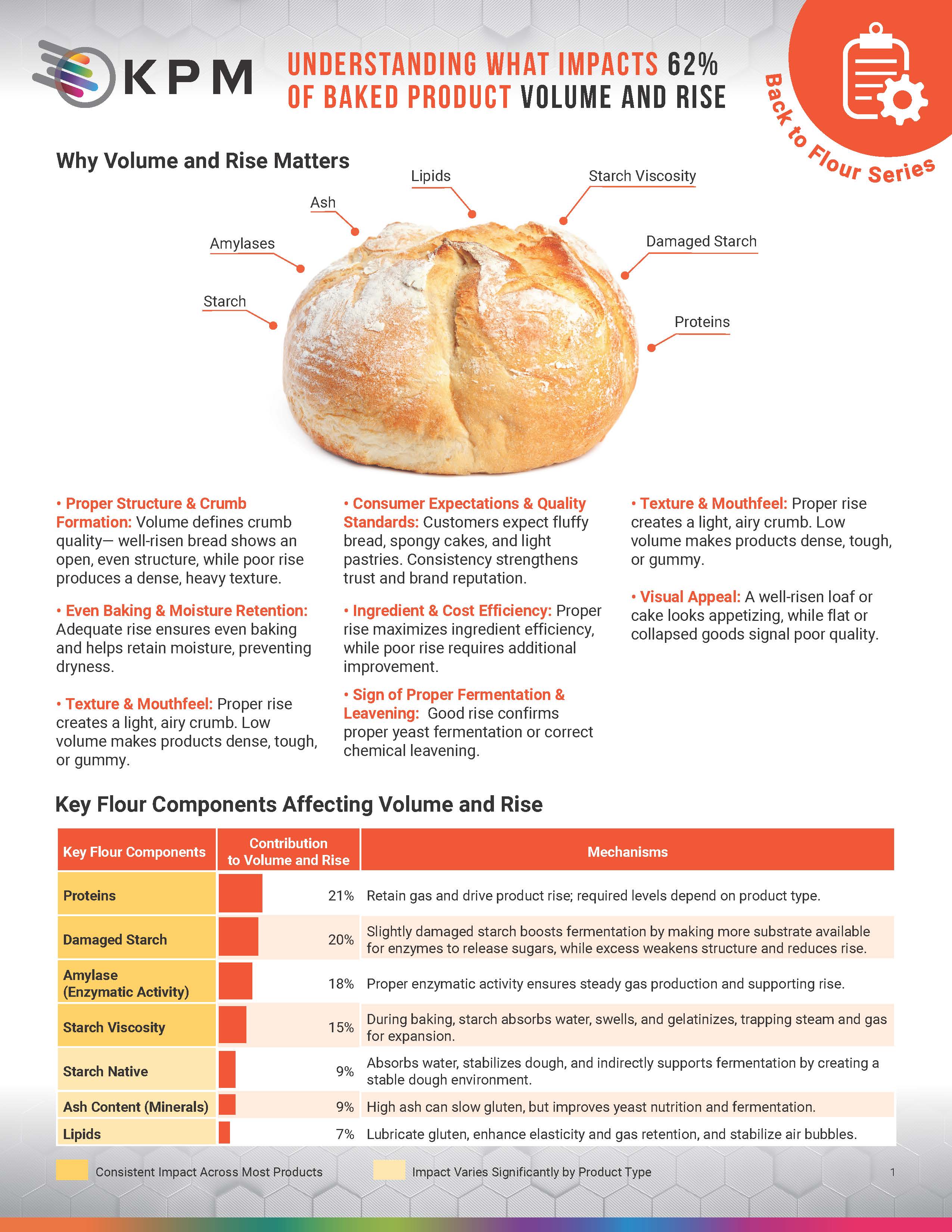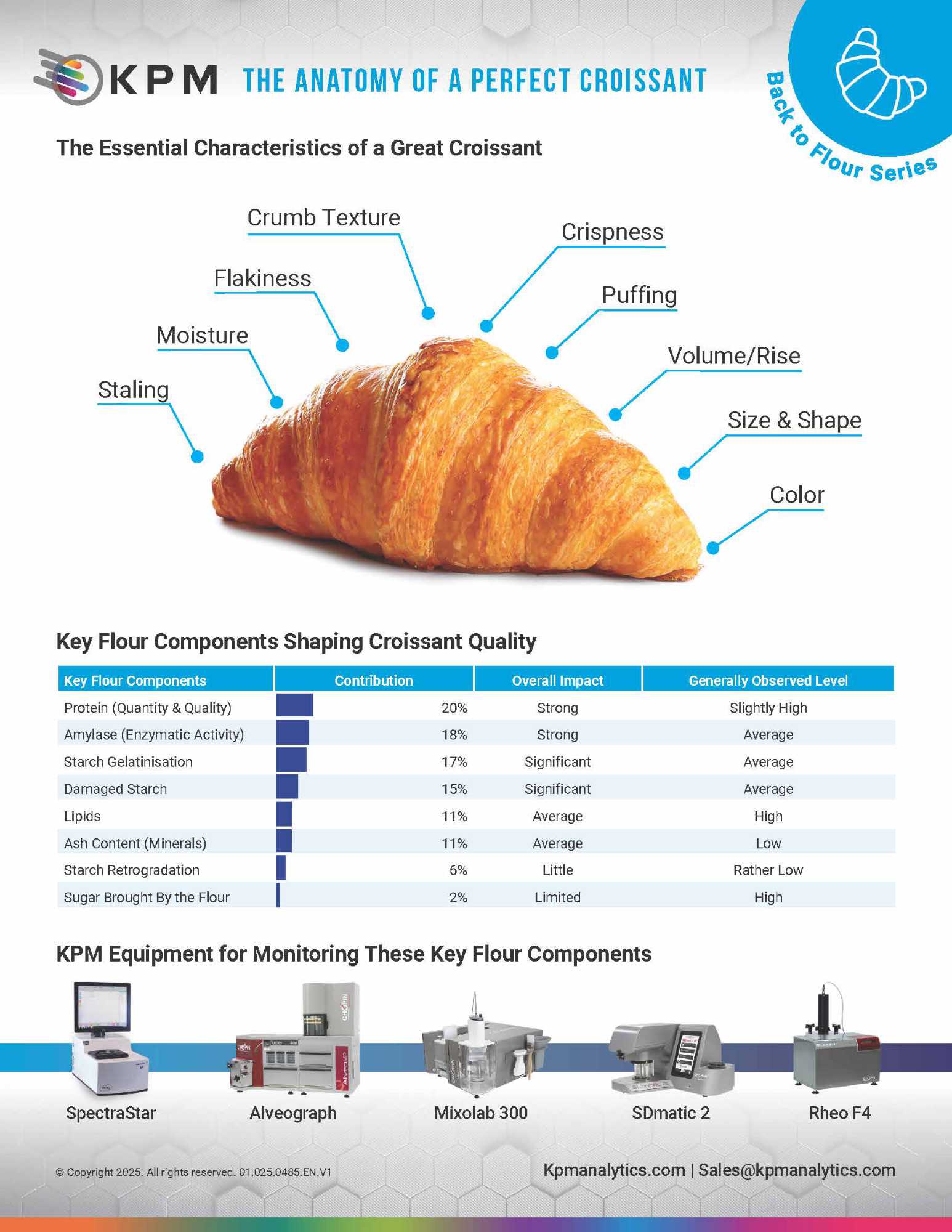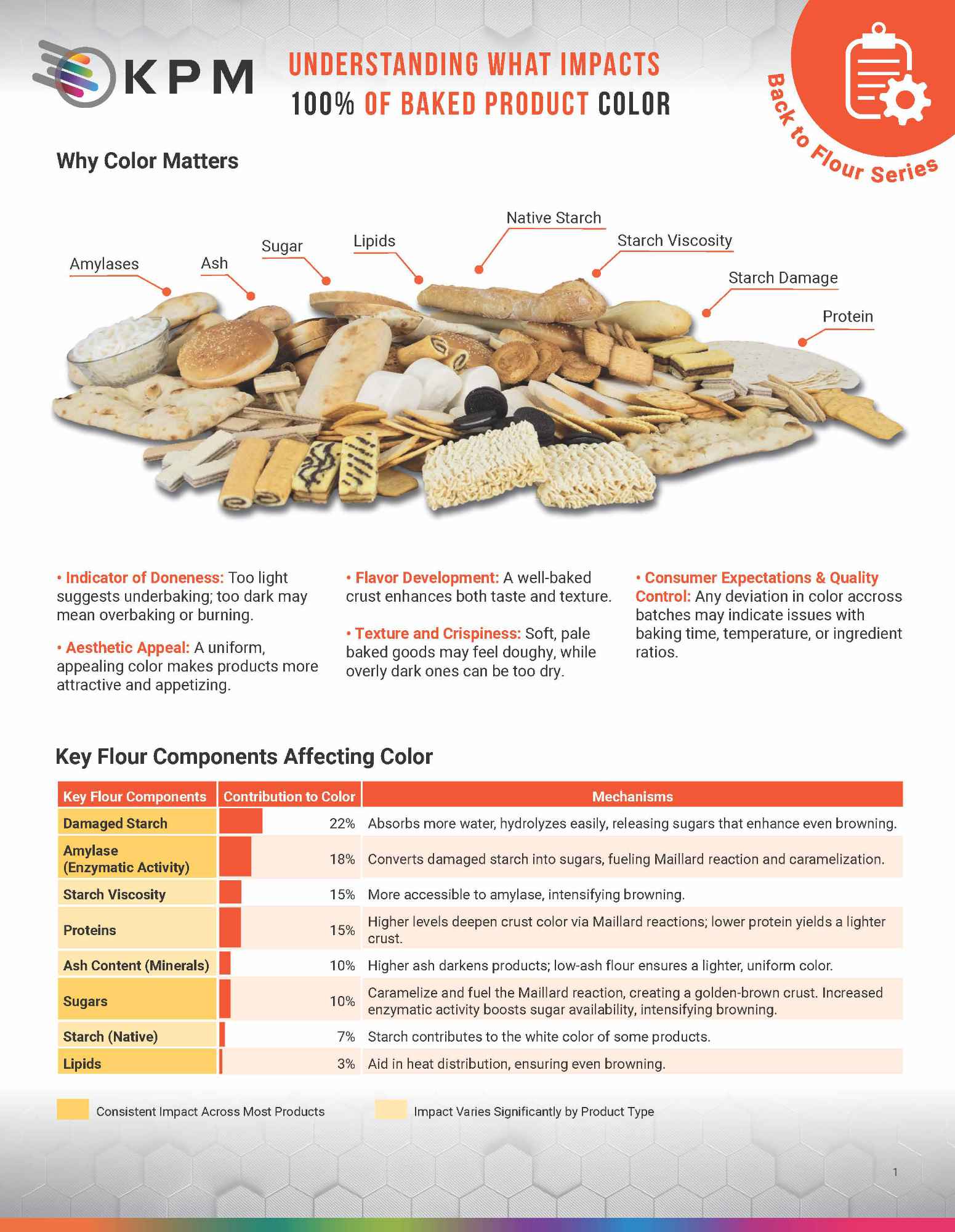Back to Flour What Impacts 62% of Baked Product Volume & Rise

Volume and rise are key attributes that define the success of bakery products, but the “ideal” outcome depends on the product itself. A pan bread should have steady expansion and a well-developed crumb, while a cake needs lightness without collapse, and some flatbreads or biscuits are valued for their limited rise. Consistency in this characteristic is essential, as it directly shapes consumer expectations and perception of quality.
This document highlights the flour components that most strongly influence volume and rise. Proteins form the gluten network that retains gas and supports expansion. Damaged starch makes more substrate available for enzymes, boosting fermentation, though excessive levels weaken structure and reduce rise. Amylase activity ensures steady gas supply, while starch viscosity traps steam and gas during gelatinization. Other contributors include native starch, ash content, and lipids, which fine-tune stability, fermentation, and elasticity.
By linking flour composition with these mechanisms, the resource helps bakers and millers anticipate performance and deliver products that consistently meet their target profiles.
This document is part of the Back to Flour Series, an educational program that connects flour science to bakery product characteristics



